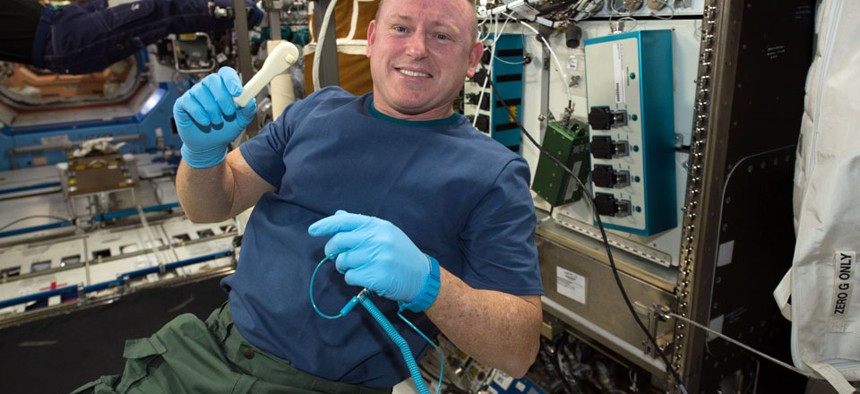What NASA's 3-D-Printed Space Wrench Says About Government Innovation

International Space Station Expedition 42 Commander Barry "Butch" Wilmore shows off a ratchet wrench made with a 3-D printer on the station. NASA
NASA’s success in on-demand manufacturing could pave the way for other federal agencies.
Four hours after NASA sent a file millions of miles away to the International Space Station, Commander Barry "Butch" Wilmore magically transformed it into a usable ratchet wrench.
Of course it wasn’t magic. It was the work of a 3-D printer and a federal agency successfully executing an innovative technological feat.
That was just one of the many references made to recent federal innovations Wednesday at the MobileGov Summit in Washington, D.C.
NASA’s success in on-demand manufacturing could pave the way for other federal agencies, according to Gwynne Kostin, director of digital government at the General Services Administration.
It’s “going to have an impact on things like the [Department of Veterans Affairs], where they're going to be able to send somebody a prosthetic over email,” Kostin said at the event. “And somebody's going to be able to print it out where they are.”
Kostin's office has focused on providing more digital-friendly services to citizens. An example of exponential pace of innovation there? In July 2010, there were only about a dozen government-created applications, according to Kostin. Today, there are over 200.
Smartphone apps may seem a world away from the feat performed aboard the space station last November. But the devices still pack a lot of technological punch.
"That smartphone in your pocket, if you have one, has as much computing power as President Reagan had in the early 1980s at the Pentagon," said David Bray, chief information officer at the Federal Communications Commission, at the MobileGov event.





